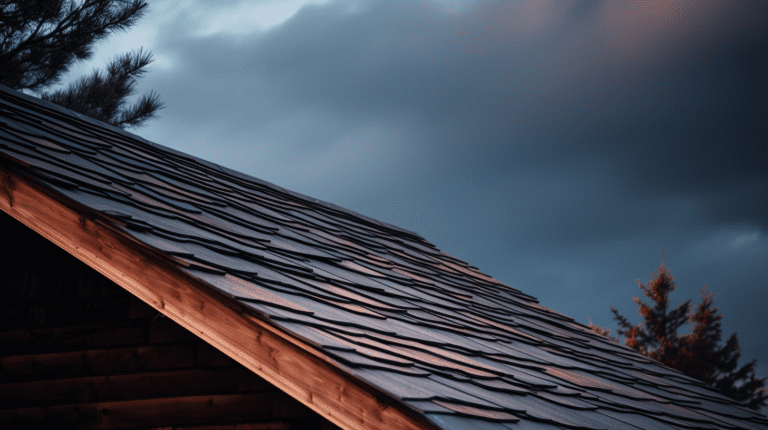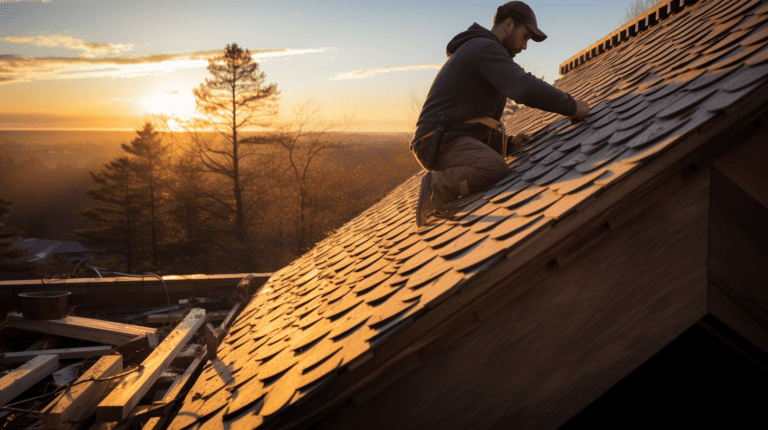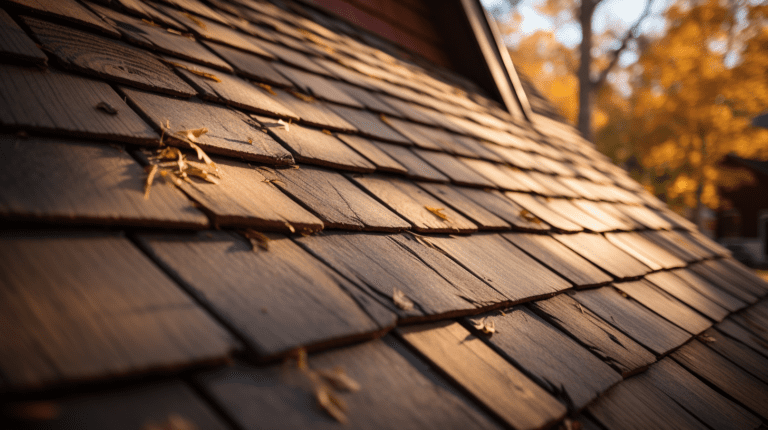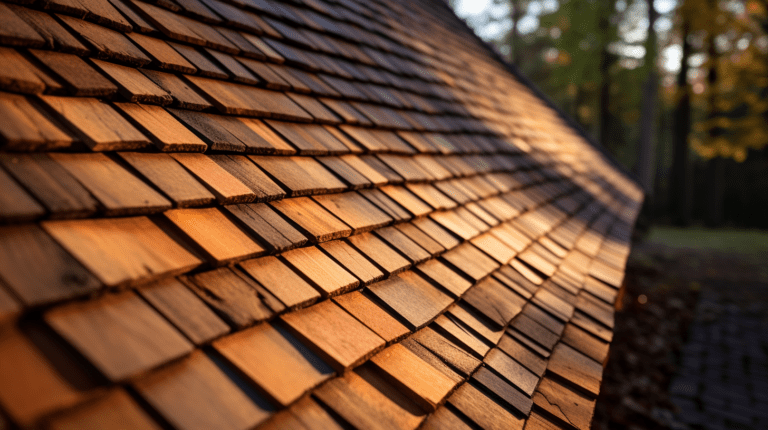
Introduction to Flame-Resistant Wood Roofs
A roof is more than a structural cover; it is a shield that protects us from environmental hazards. Among various roofing materials, wood has always held a unique charm. However, the vulnerability of traditional wooden roofs to fire has been a major concern. Enter flame-resistant wood roofs — a solution that marries the aesthetic appeal of wood with enhanced safety and durability. But what are flame-resistant wood roofs, and how do they work? Let’s delve into the details.
The Need for Flame-Resistant Wood Roofs
Fire hazards are a grim reality, causing significant damage to life and property every year. Wooden structures, especially roofs, are highly susceptible to fire. Traditional wood roofs, while charming, are akin to fuel for fires, contributing to the rapid spread of flames. Hence, the need for flame-resistant wood roofs arises, providing the aesthetic appeal of wood without compromising safety.

The Science Behind Flame-Resistant Wood Roofs
Flame-resistant wood roofs are not just about coating the surface with a fire-resistant material. It’s a science that involves the use of fire-retardant chemicals, naturally fire-resistant wood species, or a combination of both. This approach fundamentally alters the wood’s behavior under fire conditions, slowing the spread of flames, and giving occupants more time to evacuate.
How Flame-Resistant Wood Roofs Enhance Safety
Flame-resistant wood roofs provide an additional layer of security in fire scenarios. By slowing the spread of fire and reducing the emission of smoke and toxic gases, these roofs offer precious extra minutes for safe evacuation. Moreover, they reduce the likelihood of fire jumping from one structure to another, thus safeguarding the neighborhood.
The Durability of Flame-Resistant Wood Roofs
Flame-resistant wood roofs are not only about safety; they are designed for longevity. The same treatments that make the wood fire-resistant also offer protection against termites, rot, and decay. This robustness enhances the lifespan of the roof, thereby providing homeowners a worthy return on their investment.

Materials Used in Flame-Resistant Wood Roofs
Natural Flame-Retardant Wood Species
Certain species of wood have naturally higher resistance to fire, like Ipe, Black Locust, and Redwood. Their dense structure and chemical composition make them less prone to catching fire, and they can be utilized for flame-resistant roofing.
Chemical Flame-Retardants for Wood
Chemically treated flame-resistant wood involves the application of fire-retardant chemicals that reduce the wood’s flammability. These chemicals, when exposed to heat, release water and carbon dioxide, thereby slowing down the combustion process.
The Manufacturing Process of Flame-Resistant Wood Roofs
The process involves treating wood with flame-retardant chemicals under high pressure. The chemicals penetrate deep into the wood, altering its reaction to fire. The treated wood is then kiln-dried to remove moisture and lock in the chemicals.

Installation and Maintenance of Flame-Resistant Wood Roofs
Installation of flame-resistant wood roofs is similar to traditional wood roofs, with additional attention to the fasteners used to ensure they match the safety standards. Maintenance typically includes regular inspections for wear and tear, and reapplication of the fire-retardant coatings as needed.
Environmental Impact of Flame-Resistant Wood Roofs
Flame-resistant wood roofs present an eco-friendly alternative to synthetic roofing materials. The manufacturing process, if managed responsibly, has less carbon footprint. Additionally, many fire-retardant chemicals used today are less toxic and more environmentally friendly than their predecessors.
Regulations and Standards for Flame-Resistant Wood Roofs
Certain building codes and standards govern the use of flame-resistant wood roofs, such as the International Building Code (IBC) and the National Fire Protection Association (NFPA) standards. These ensure the products used are adequately tested and meet the required fire safety performance.
Cost and Economic Impact of Flame-Resistant Wood Roofs
While flame-resistant wood roofs may have a higher initial cost compared to traditional wood roofs, their durability and the added layer of safety they offer can lead to savings in the long run. Moreover, they can also potentially reduce insurance premiums, providing economic benefits.
Future Trends in Flame-Resistant Wood Roofs
The future of flame-resistant wood roofs is promising, with advancements in material science and nanotechnology expected to bring about more effective and affordable solutions. The rising awareness about fire safety is also likely to increase the demand for these roofs.
Comparing Flame-Resistant Wood Roofs with Other Roofing Materials
When compared to other roofing materials like asphalt shingles, metal, or tiles, flame-resistant wood roofs offer a unique blend of aesthetic appeal, safety, and durability. Although each roofing material has its pros and cons, the advantages of flame-resistant wood roofs are significant.
Benefits of Flame-Resistant Wood Roofs for Homeowners
For homeowners, flame-resistant wood roofs offer peace of mind, knowing their home is protected against fire hazards. Additionally, they provide improved home value, potential insurance benefits, and the inherent beauty of wood, thereby enhancing the living experience.
Conclusion
Flame-resistant wood roofs mark a significant stride in roofing technology, combining the charm of wood with enhanced fire safety. By understanding the science, benefits, and future prospects of flame-resistant wood roofs, one can truly appreciate their potential to redefine roofing standards.
FAQs Section
Flame-resistant wood roofs are designed to slow down the spread of fire, providing more time for fire services to respond. However, they are not entirely fireproof. They add an extra layer of protection, but it’s always essential to have a comprehensive fire safety plan in place.
Yes, existing wood roofs can be treated with fire retardants to enhance their fire resistance. However, it’s recommended to consult with a professional roofer to ensure the treatment is done effectively.
The frequency of retreatment can vary based on factors like the local climate and the specific product used. As a general rule of thumb, it’s a good idea to consider retreatment every 3-5 years.
While the maintenance of a flame-resistant wood roof is similar to regular wood roofs, additional steps like retreatment may be necessary to maintain the fire-resistance properties.
Flame-resistant wood roofs are seen as a valuable addition to any property due to their aesthetic appeal and enhanced safety features. So, they can potentially increase your property’s value.
Yes, most fire retardants used for treating wood roofs are non-toxic and environmentally friendly. Plus, wood is a renewable resource, making it a sustainable choice.
